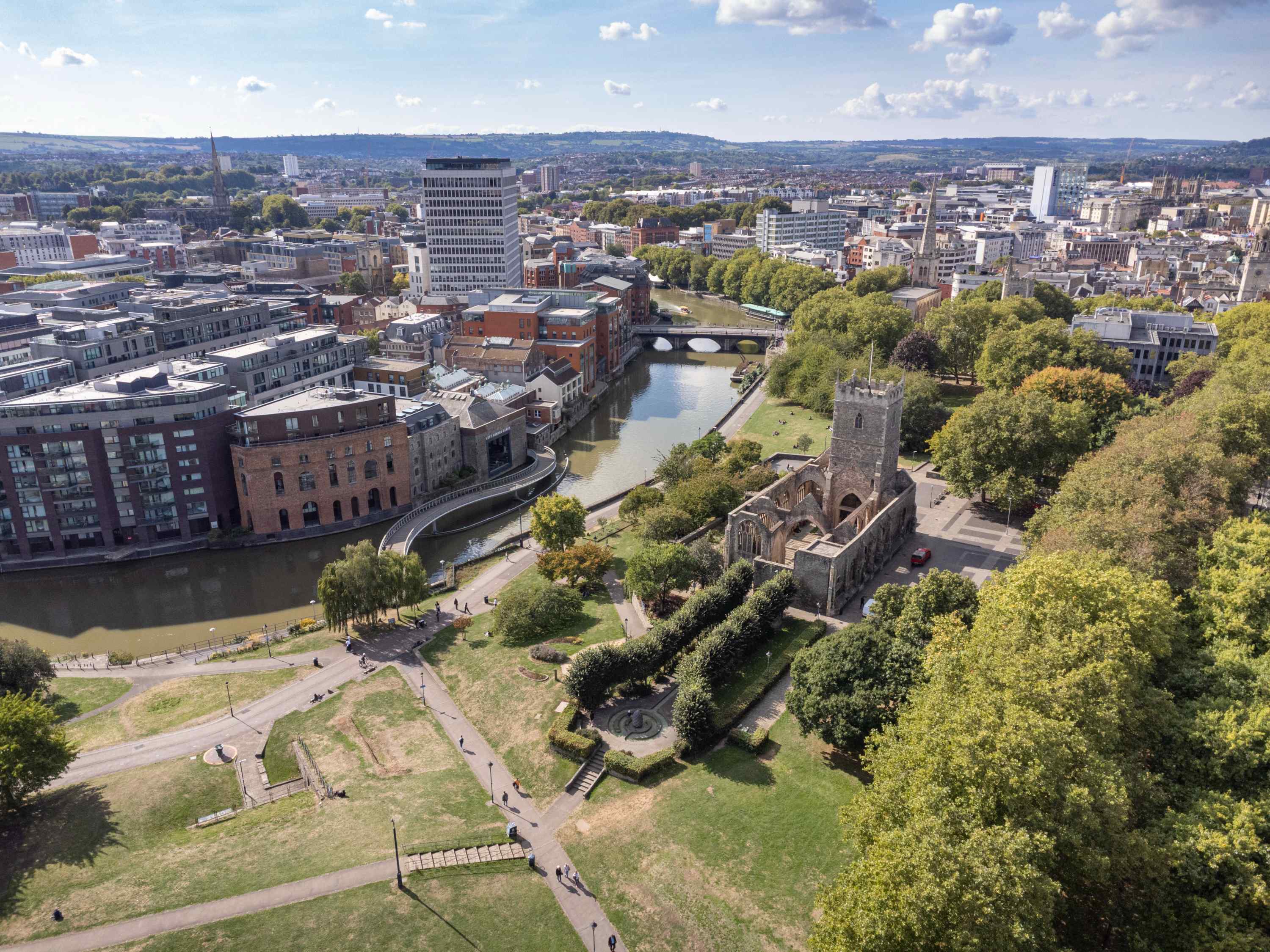Historic Places and Healthy Lifestyles
Part of the Heritage Counts series. 2 minute read.
The environment is an important determining factor for our health and wellbeing. One of the main ways in which our surroundings affect our health is by enabling physical activity (Kent and Thompson, 2014). In this article, we explore how historic places encourage healthy lifestyles and the role of the historic environment in contributing to public health.
Historic places can support healthy behaviours
The design and layout of historic towns and cities can support people to keep physically active.
Historically, towns and cities were designed to be pedestrian oriented. (Porta et al, 2014). In 2020, the independent Building Better, Building Beautiful Commission recommended returning to the design of traditional settlements that were built to prioritise people (BBBBC, 2020). This is because of the proven physical health benefits of a compact environment that facilitates active travel (walking and cycling).
- A compact city where a modal shift is achieved (from private motor vehicles to walking, cycling, and public transport) resulted in health gains for diabetes, cardiovascular disease, and respiratory disease, with the overall health gains ranging from 420 disability-adjusted life years (DALYs) per 100,000 population to 826 DALYs per 100,000 population (Stevenson et al, 2016)
- Residents of compact areas have been found to walk more compared with residents of low-density areas (Ewing et al, 2014). These findings are based on a US study that combines data from a ‘sprawl index’ with health outcome and behaviours data from 350,000 adults
Historic green and blue spaces are settings for recreation and physical activity
Parks and green spaces are rich in history and attract many visitors each year. According to the Participation Survey (DCMS, 2022), visiting parks/gardens with historic features is the most popular form of physical engagement with heritage (selected by 40%).
Heritage as a component of high quality green space
High quality green spaces are associated with improved physical activity. Quality matters for achieving these benefits and ensuring green spaces can help to tackle key public health challenges such as physical inactivity and obesity (Public Health England, 2020). The contribution of heritage to high quality green space is recognised by Natural England (2023) in their Green Infrastructure (GI) framework, which states that good quality local green space should respond to and enhance the character and history of an area to create beautiful, well designed and distinctive places.
Other features of the historic environment in our towns and cities include ‘blue’ spaces, such as canals, which have the potential to provide health benefits by offering opportunities for outdoor activities such as walking and cycling (Brown, 2020).
- The Canal and River Trust (2022a) estimates that approximately 9 million people visit their network of historic waterways regularly. They estimate that active use of waterways saves the NHS a total of £1.1 billion in cost savings per year (2022b)
- Academics at Manchester University used experimental methods to study the impact of an urban canal improvement intervention which included activities such as restoring footpaths. They concluded that investing in the regeneration of canals has the potential to increase the number of users as well as increase walking and vigorous physical activity (Benton et al, 2021)
- Research led by Glasgow Caledonian University found a faster rate of decline (3% annually) in mortality rates in urban areas close to canals that have undergone major transformation and regeneration, compared to areas further away (Tieges et al, 2020)
References
- Benton, J.S. et al (2021) ‘A natural experimental study of improvements along an urban canal: impact on canal usage, physical activity and other wellbeing behaviours.’ International Journal of Behavioral Nutrition and Physical Activity, 18, pp.1-16. Available at: https://doi.org/10.1186/s12966-021-01088-w (Accessed: 07.06.23)
- Brown, S. (2020) ‘The social benefits of Blue Space: a systematic review.’ Available at: https://assets.publishing.service.gov.uk/government/uploads/system/uploads/attachment_data/file/928136/Social_benefits_of_blue_space_-_report.pdf . (Accessed: 14.06.23).
- Building Better, Building Beautiful Commission. (2020). ‘Living with beauty: report of the Building Better’ Building Beautiful Commission. Available at: https://www.gov.uk/government/publications/living-with-beauty-report-of-the-building-better-building-beautiful-commission (Accessed: 06.03.23)
- Canal and River Trust (2022a) ‘Annual report and accounts 2021/22’. Available at: https://canalrivertrust.org.uk/refresh/media/thumbnail/46785-canal-and-river-trust-annual-report-2021-22.pdf (Accessed: 27.09.23)
- Canal and River Trust (2022b) ‘Valuing Our Waterways: Aggregate Benefits to Society and the Economy.’ Available at: https://canalrivertrust.org.uk/media/document/TjIie_jp-WwSAq6L2a_wlA/G-zUoXuTDdNjl29_jjdSSrbYH5TBNnSw-33N4NZRhPA/aHR0cHM6Ly9jcnRwcm9kY21zdWtzMDEuYmxvYi5jb3JlLndpbmRvd3MubmV0L2RvY3VtZW50Lw/0189ac9c-a64f-7e5e-b279-c72d88e27ac7.pdf. (Accessed: 27.09.23)
- DCMS (2022) 'Participation Survey' Oct 2021 to March 2022. Available at: https://www.gov.uk/government/statistics/participation-survey-2021-22-annual-report/main-report-for-the-participation-survey-october-2021-to-march-2022 (Accessed: 09.02.23)
- Ewing, R. et al (2014). ‘Relationship between urban sprawl and physical activity, obesity, and morbidity–Update and refinement’. Health & place, 26, pp.118-126. Available at: https://doi.org/10.4278/0890-1171-18.1.47 (Accessed: 22.03.23)
- Kent, J.L. and Thompson, S. (2014) ‘The three domains of urban planning for health and wellbeing’. Journal of Planning Literature, 29 (3), pp. 239-256. Available at: https://doi.org/10.1177/0885412214520712 (Accessed: 06.03.23)
- Natural England (2023) ‘Green Infrastructure Principles.’ Available at: GreenInfrastructurePrinciples.pdf (naturalengland.org.uk). (Accessed 14.06.23)
- Porta, S. et al (2014). ‘Alterations in scale: Patterns of change in main street networks across time and space’. Urban Studies, 51(16), 3383–3400. Available at: https://doi.org/10.1177/0042098013519833 (Accessed: 22.09.23)
- Public Health England (2020) ‘Improving access to greenspace: a new review for 2020.’ Available at: Improving access to greenspace: 2020 review (publishing.service.gov.uk). (Accessed 14.06.23).
- Stevenson, M. et al (2016). ‘Land use, transport, and population health: estimating the health benefits of compact cities’. The Lancet, 388(10062), pp.2925-2935. Available at: https://doi.org/10.1016/S0140-6736(16)30067-8 (Accessed: 14.06.23)
- Tieges, Z. et al (2020) ‘The impact of regeneration and climate adaptations of urban green–blue assets on all-cause mortality: a 17-year longitudinal study.’ International journal of environmental research and public health, 17(12), p.4577. Available at: https://doi.org/10.3390/ijerph17124577 (Accessed: 16.07.23)





